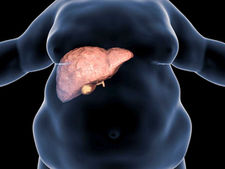
Waist Slip
SPONDYLOLISTHESISIS What is Waist Slippage?
It is the slippage of one of the lumbar vertebrae on the vertebra below it. The most common slippage is forward. This is medically called spondylolisthesis. Rarely, backward slippage may occur, and this condition is called retrolisthesis. Spondylolisthesis (lumbar slippage) is seen with a frequency of 4-8% in adults. This problem is thought to be a stress fracture that occurs as a result of repetitive loading on the bone ring. Degenerative changes resulting from wear or tear can also lead to this disease. Just like hair graying, the spine also ages and wears out over the years. These changes affect the structures that support the healthy alignment of the spine. Degeneration in the disc and facet joints causes the spine to be more mobile than normal. The loosening and increased movement in this structure causes additional loads. The disc weakens and facet joints become compressed. As a result, the support of the facet joints becomes ineffective and the upper vertebra slides forward. Spondylolisthesis caused by degeneration usually affects people over the age of 40. In general, it causes L4 to shift over L5.
What are the Symptoms of Lumbar Slipping?
The most common clinical complaint is low back pain. This pain often radiates to the legs. Spasm and pain in the muscles at the back of the thigh are important symptoms, and the presence of these symptoms, especially in young people and children who do sports, should bring to mind spondylolisthesis. In advanced cases, pain and numbness radiating to the feet and loss of reflexes and movements may occur due to nerve compression.
What are the Treatment Methods for Spinal Slipping?
Nonsurgical methods include short-term bed rest, anti-inflammatory medications (orally or by injection) to reduce pain, analgesics to control pain, physical therapy methods and exercise to improve flexibility and strength. In an adult, the presence of a single vertebral fracture (spondylolysis) or intervertebral slippage (spondylolisthesis) does not create a dangerous situation. Therefore, treatment should aim to control pain and enable the patient to perform daily living activities. Although non-surgical treatment methods do not correct the deformity, they can provide long-term pain control without the need for interventional methods. Surgical treatment can be applied to relieve the nerve that is exposed to compression as a result of slipping. Stabilization or fusion with a screw and rod system may be recommended to relieve the pressure on the nerve located near the slip. A full rehabilitation program is recommended after the operation in order to return to daily living activities.
FOR INFORMATION AND APPOINTMENT, YOU CAN LEAVE YOUR NUMBER OR ASK OUR EXPERTS
YOU CAN LEAVE YOUR NUMBER FOR INFORMATION AND APPOINTMENT AND ASK QUESTIONS TO OUR EXPERTS



-04.png)
-06.png)
-05.png)
-08.png)
-07.png)























